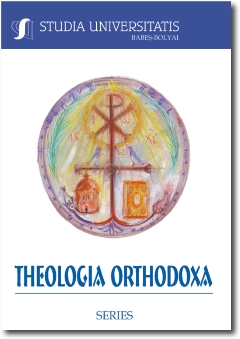SĂRBĂTOAREA ÎNVIERII DOMNULUI (COBORÂREA LA IAD). REPREZENTAREA EI ÎN PICTURA RĂSĂRITEANĂ ŞI CEA APUSEANĂ
THE CELEBRATION OF CHRIST’S RESURRECTION (THE DESCENDING INTO HELL). ITS REPRESENTATION IN WESTERN AND EASTERN PAINTINGS
Author(s): Marcel Gh. MunteanSubject(s): Christian Theology and Religion
Published by: Studia Universitatis Babes-Bolyai
Keywords: The descending into hell; Christ’s resurrection; Duccio di Buoninsegna; Giotto; Fra Angelico; Andrea Mantegna; Dürer; Tintoretto.
Summary/Abstract: The Celebration of Christ’s Resurrection (The Descending into Hell). Its Representation in Western and Eastern Paintings. The christian iconography includes different representations when it comes to the celebration of Christ’s resurrection. In the past, the image of the prophet Jonas, coming out of the fish’s abdomen, symbolized the next iconographical scene; also the prudes met by the angel when he arrived at the tomb, according to the gospel’s words. The inspiration for this genre painting comes from Saint Peter’s epistle, the one that reminds us that the Saviour went and preached for the spirits from the dungeon. The Christ, in his humbleness, assuming the human condition, descends into hell, defeating it; therefore, our ancestors Adam and Eve are free again, alongside the God-fearing men mentioned in the Old Testament. An important source of inspiration was also the uncanonical gospel written by Nicodemus . The theme has its origins in the byzantine area, from where it was later transfered towards the western areas . The first iconographic type depicts Jesus lifting Adam, the forefather, followed by the patriarchs. The duality of this type consists of two distinct events: the descending and the rise of Jesus. The second iconographic type depicts Adam together with Eve. This representation is not mentioned in the gospel according to Nicodemus. Many western artists have painted this theme: Duccio di Buoninsegna, Giotto, Fra Angelico, Andrea Mantegna, Dürer, Tintoretto, imprinting their own visions, while the byzantine icon stays traditionally linked to the erminie of byzantine painting. The present study includes a large variety of paintings specific to the main christian areas: East and West. Until the Rennaisance, it was similar to Byzantium, but starting with the baroque period, the western art will embrace the uncanonical interpretation of the Saviour’s resurrection. This scene will also be seen in the romanian postbyzantine paintings of the 18th century, alongside the theme of descending into hell.
Journal: Studia Universitatis Babes-Bolyai - Theologia Orthodoxa
- Issue Year: LVII/2012
- Issue No: 1
- Page Range: 247-259
- Page Count: 13
- Language: Romanian

